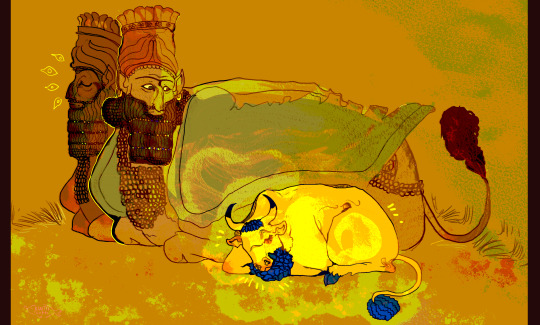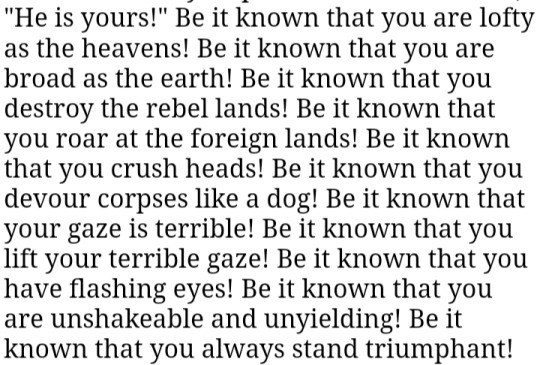Photo

Assyrian treasures found in tombs from the 8th century B.C., under the royal palace in Nimrud.
39 notes
·
View notes
Text
Dream house decoration would be:

Howl's moving castle
469 notes
·
View notes
Text
This is my journey, and I refuse to give up.
4 notes
·
View notes
Text
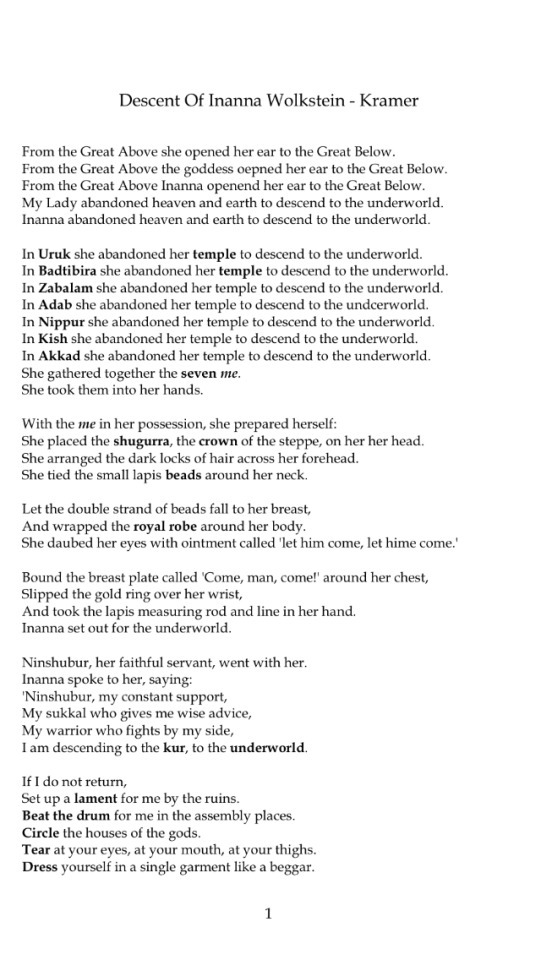


you think you are helping to mourn a family member butt erish your older sister & her servant, neti try it. luckily, you've already prepped for her scammer ways.... "father enki knows the food of life, he knows oshun, he gets it"
erishkigals' servant neti tries to throw shade, roses pour instead. "legs on clouds, ass on andromeda". inanna is...flowers burst in the underworld. the trial begins.

38 notes
·
View notes
Photo

“The Ishtar Gate was the eighth gate to the inner city of Babylon. Thought to have been built around 575 BC during the reign of King Nebuchadnezzar II, the gate was dedicated to the Babylonian goddess Ishtar. Hence its name. As part of the city walls of Babylon, the Ishtar Gate was one of the original Seven Wonders of the World.”
- Thomas Dowson, BABYLON TO BERLIN & BEYOND: THE ISHTAR GATE IN THE PERGAMON MUSEUM AND AROUND THE WORLD
0 notes
Text
Enheduanna, the First Writer
Well, the first known writer. She was a Sumerian princess-priestess-poetess.
She lived from 2285-2250 BCE in Ur, Sumeria (modern-day Iraq). Her father was King Sargon the Great of Akkad, who unified many Sumerian city-states and was the first person in recorded history to rule an empire (probably--it depends on your precise definition of 'empire').
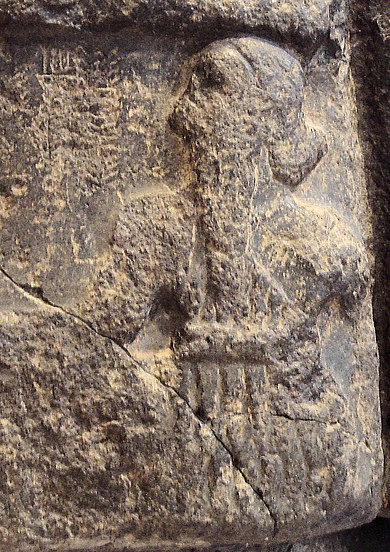
It was Sargon who appointed his daughter to High Priestess to help consolidate power in the city of Ur, in the southern part of the kingdom.
She served, and was called the wife of, Nanna, the Sumerian moon god. The name we now know her by reflects this: EN was the role of High Priestess and Nanna was the diety she served. However, many of her writings were for Inanna (later called Ishtar), the Queen goddess of love, beauty, sex, war, justice, and political power.
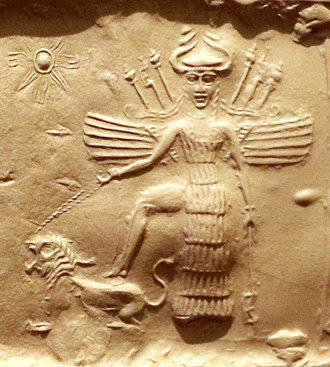
All told, Enheduanna composed 42 hymns that were spread and copied through the empire. She said,
"My king, something has been created that no one has created before."
She also wrote 'Nin-Me-Sar-Ra' (The Exaltation of Inanna), one of several personal devotions to Inanna that helped connect the goddess to Ishtar. It also details some events of Enheduanna's life. It relates that she was expelled from Ur after a political rebellion against her father; she asked Nanna to intercede..

It's not known how her life ends, but the Akkadian Empire started by her father lasted for a hundred years after her death, and her name and works remain famous across the world.
Temple Hymn 26
The Zabalam Temple Of Inanna
O house wrapped in beams of light
wearing shining stone jewels wakening great awe
sanctuary of pure Inanna
(where) divine powers the true me spread wide
Zabalam
shrine of the shining mountain
shrine that welcomes the morning light
she makes resound with desire
the Holy Woman grounds your hallowed chamber
with desire
your queen Inanna of the sheepfold
that singular woman
the unique one
who speaks hateful words to the wicked
who moves among the bright shining things
who goes against rebel lands
and at twilight makes the firmament beautiful
all on her own
great daughter of Suen
pure Inanna
O house of Zabalam
has built this house on your radiant site
and placed her seat upon your dais
53 notes
·
View notes
Photo
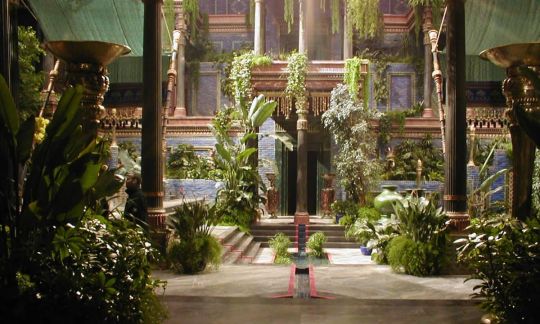
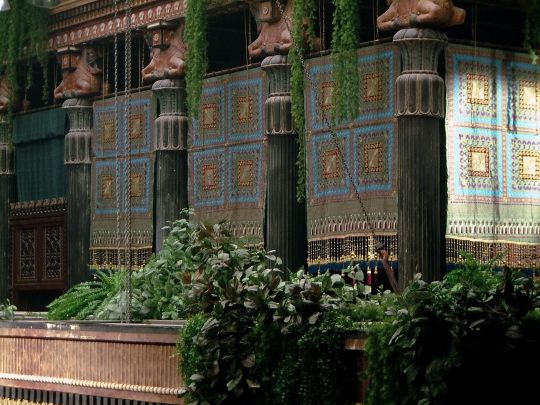
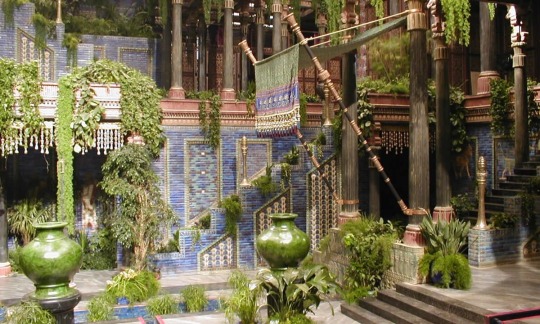
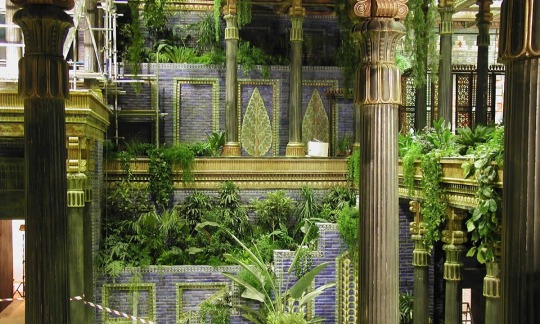
Reconstruction of Babylonian garden used as a backdrop for the film Alexander.
26K notes
·
View notes
Text
sometimes I see pictures from when I was younger and it makes me wonder why I spent so much time hating myself. sweet little baby me. I was still growing. I was still learning. I was still getting used to my own skin. I didn’t deserve that
54K notes
·
View notes
Text

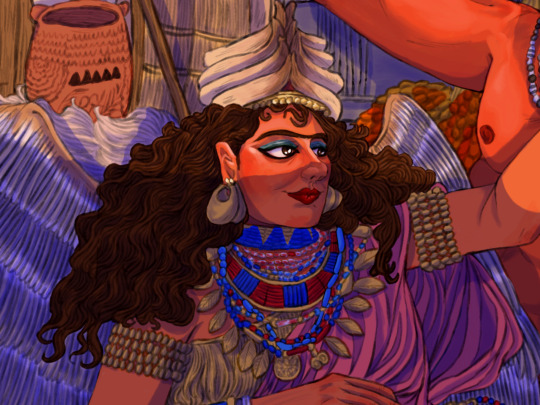
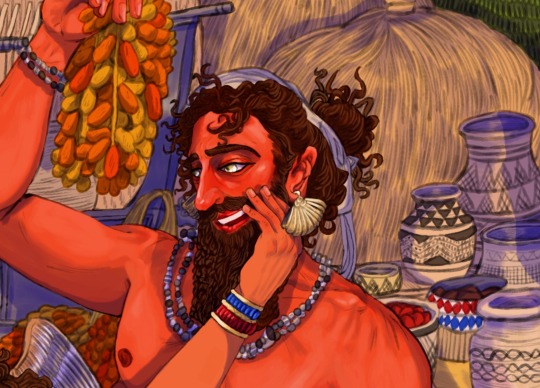

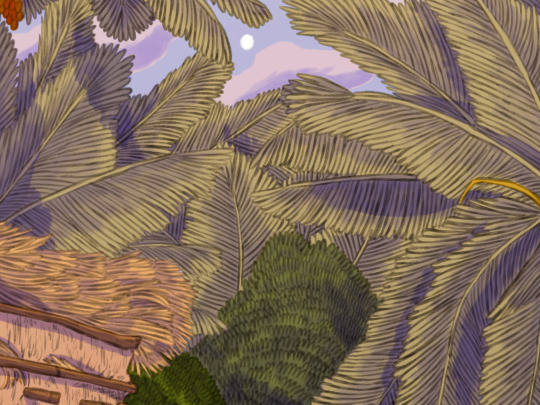
“Sunset in the marshlands of Lower Mesopotamia/ Beth Nahrain/ Bilād ar-Rāfidayn 🇮🇶🌅🌱”
[With the gods Inanna-Ishtar and Dumuzi-Tammuz, whom later reinterpreted and syncretized with an unnamed native Cypriot mother goddess by the ancient Greeks; as “Aphrodite and Adonis”.]
Thanks to one of my oomfs, @/tiziri_art on Twitter for brought up the idea of “Saharacore” and “Mesopotamian farmcore/cottagecore” through our conversation in the first place; as well as @deerheadlights and @/UmairNajeebKhan on Twitter for being inspirations for Inanna-Ishtar’s historical fashion design.
A lot of pottery objects, statuettes & the gods’ jewelries that I included here were dated from the early years of Halaf-Ubaid culture - the 3rd Dynasty of Ur. (Ranging from 6500BC - 2004BC. So I guess the gods here, also love ancient jewelries and objects as much as we do ??!)
The food that were displayed here based mostly on my understanding of the agricultural cultivation in Ancient Mesopotamia & Iraqi cuisine. Tons of grains/légumes (included wheat, barley, rice), with fruits include apples, quinces, cherries, figs, pears, apricots, plums, melons, pomegranates, citruses & palm dates. (Which is the fruit that her husband, the shepherd Dumuzi-Tammuz was associated with in the city of Lagash.)
175 notes
·
View notes
Photo

Edouard Baribeaud — Enheduanna’s Song (watercolor and ink on paper, 2020)
210 notes
·
View notes
Text
[Her violence and her destructiveness go beyond the boundaries of tolerable human behavior].
She carries the light and the dark to their extremes.
She is the divine manifestation of the ultimate conjunction of opposites.
—Betty De Shong Meador, Inanna, Lady of Largest Heart: Poems of the Sumerian High Priestess Enheduanna
37 notes
·
View notes
Quote
He has not stood in awe of the greatest deity. He has turned that temple, whose attractions were inexhaustible, whose beauty was endless, into a destroyed temple. While he entered before me as if he was a partner, really he approached out of envy. My good divine wild cow, drive out the man, capture the man!
The Exaltation of Inanna, first hymn in the world by the first author in world history, High Priestess Enheduanna, c. 2300 B.C.E. (via art-witches)
247 notes
·
View notes
Photo

Day 10!
Enheduanna, an Ancient Sumerian high priestess, holds the distinction of being the earliest recorded poet. She was the daughter of Sargon of Akkad (who holds the distinction of being arguably the oldest recorded emperor), and was appointed high priestess of Inanna in the city of Ur. This gave her a great deal of political influence in Ur, and she likely acted there on behalf of her father. Her continuing political influence made her a thorn in the side of her brother, Rimush, and during his reign she was banished from Ur. Upon her reinstatement, she wrote a poem praising Inanna, “Nin me sara,” a mix between personal devotion and political commentary.
A number of Enheduanna’s poems, the bulk of which are known as the “Sumerian Temple Hymns,” have survived the nearly 4000 years since her death.
5 notes
·
View notes
